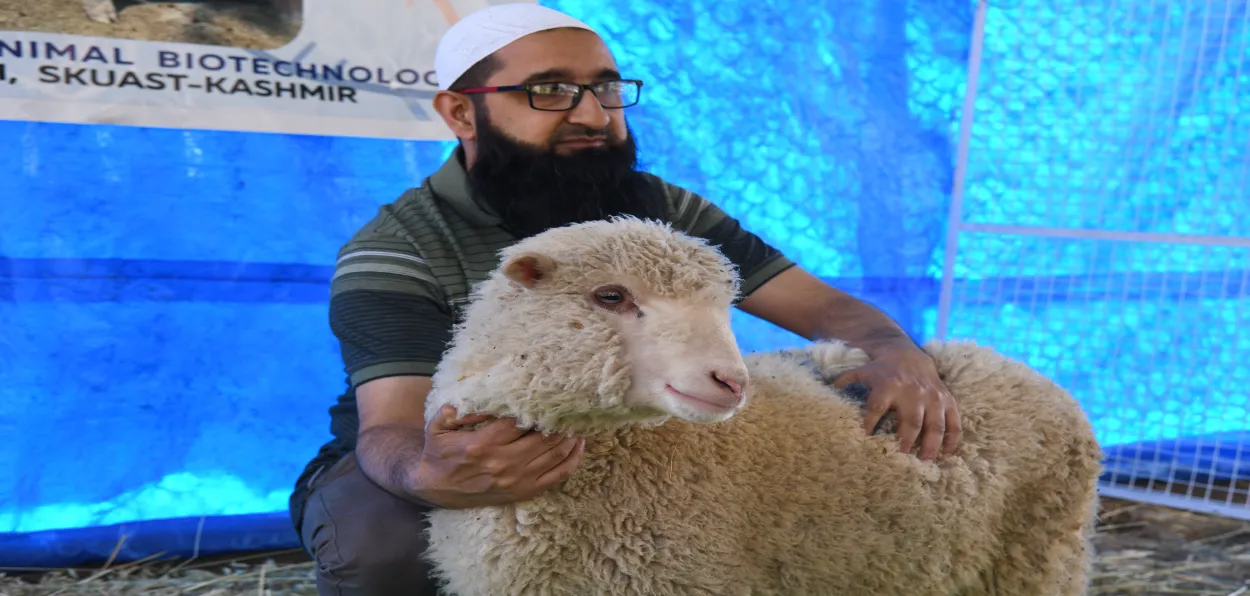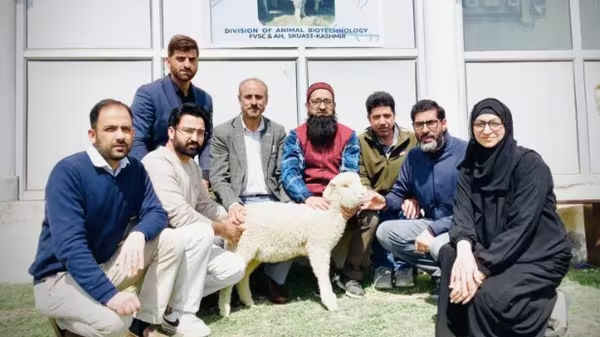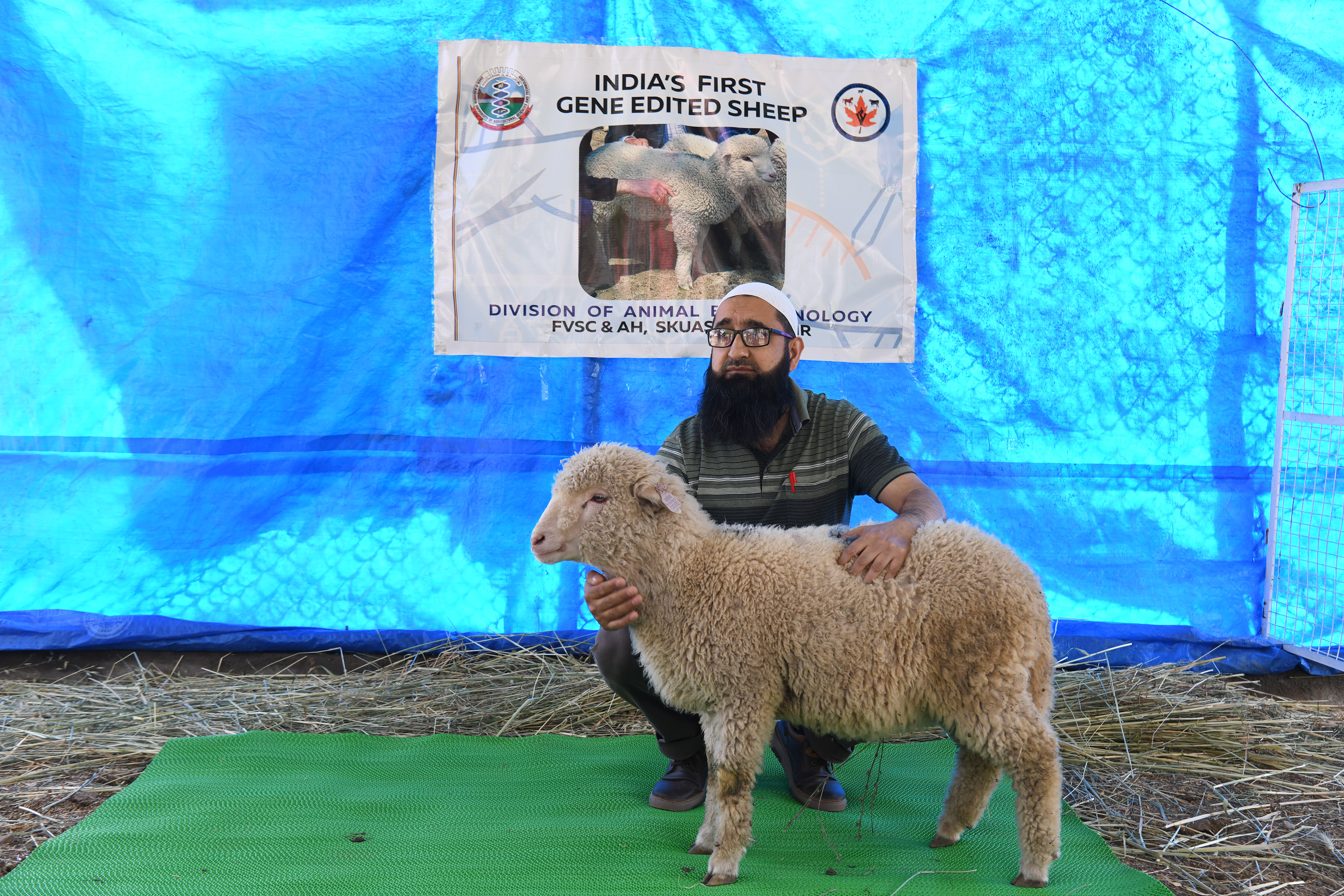
Basit Zargar/Srinagar
Scientists at the Sher-e-Kashmir University of Agricultural Sciences and Technology (SKUAST) in Kashmir have created the country's first gene-edited sheep.
Using the cutting-edge gene editing technology called CRISPR-Cas9, scientists deactivated the myostatin gene of this sheep, resulting in its muscle size increasing by about 30% than normal.
It is noteworthy that the myostatin gene controls muscle growth. By inactivating it, muscle development can be accelerated. This feature is found in European breeds, such as Texel sheep, but is missing in Indian sheep.
This innovation of SKUAST has not only put India on the global map of this technology but it can also give new dimensions to the future of animal husbandry.
Describing the achievement as a “landmark moment”, Dr. Nazir Ahmad Ganai, Vice Chancellor, SKUAST-Kashmir, said, “This is not just the birth of a lamb but the beginning of a new era of animal genetics in India.

The SKUAST behind the gene-edited sheep project
“We are now able to use precise biological techniques that neither introduce foreign DNA nor pose a threat to the environment.”
He said that gene editing technology has immense scope for increasing meat production, creating disease-resistant breeds, and developing animal breeds that are resistant to the impact of climate change.
This success is the result of years of research by a team of scientists led by Dr Riaz A Shah.
The CRISPR-Cas9 technology used for gene editing was originally developed to treat human diseases but is now being used in agriculture, crop improvement, animal breeding and biomedicine.
This technology allows specific genes to be targeted and modified or deactivated, producing desired traits in an organism — without the introduction of any external or foreign DNA. This is why gene editing is different from traditional ‘genetically modified organisms’ (GMOs) and is considered more compliant on biosafety standards.
SKUAST scientists had delivered India’s first cloned Pashmina goat “Noori” in 2012.
Dr. Ganai said that the university is working towards setting up India's most advanced reproductive biotechnology center. This center will promote research in artificial intelligence, stem cell research, vaccine development, transgenic research, and cloning.

The gene-edited sheep at SKUAST campus in Srinagar
Jammu and Kashmir Lieutenant Governor Manoj Sinha, congratulated the university and the research team for this achievement. He said, “This research can play a revolutionary role in the socio-economic progress of the region.”
Although this sheep has been developed for research only, scientists believe that this technology can also be used commercially in the future. Especially in an agriculture-based country like India where animal husbandry is the basis of livelihood for millions of farmers, this technology can bring a revolution.
SKUAST ensured that all international biosafety protocols were followed in this gene-editing experiment. The scientists gave priority to ethics, environmental impact, and animal welfare.
“Our goal is not just to achieve scientific success, but also to ensure that our research has a positive impact on society and that biological innovation is sustainable and equitable,” says Dr. Shah.
The birth of this gene-edited sheep is not just a biological experiment but a historic milestone in India's biotechnology journey. This success is a concrete step in the direction where science, agriculture, and technology can together realize the dream of a self-reliant and sustainable India.
READ MORE: Khushboo Mirza's incredible journey from small town Amroha to ISRO
India is now not only mastering cutting-edge technologies like CRISPR but also implementing them as per local needs and global standards — this is the true definition of innovation.
